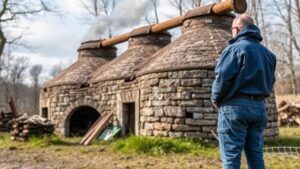Recovering Historic Relics in Abandoned Textile Mills
Recovering Historic Relics in Abandoned Textile Mills
The decline of the textile industry in North America and Europe has left a legacy of abandoned mills, many of which are rich in history and material culture. Recovering historic relics from these sites provides not just a glimpse into industrial heritage but also represents an opportunity to preserve and repurpose artifacts that embody a significant part of our socioeconomic narrative. This article delves into the methodologies, challenges, and examples associated with this important field of study and activity.
The Historical Significance of Textile Mills
Textile mills played a pivotal role in the industrial revolution, transforming economies and communities. e facilities were centers of innovation, labor, and production. According to the American Textile History Museum, by 1900, textiles were the leading U.S. manufacturing industry, employing over 300,000 workers in textile mills.
As industrial activities migrated or declined, many mills were left abandoned, standing as monuments to a bygone era. e structures often contained various industrial artifacts, such as looms, bobbins, and machinery, each offering insights into the technologies and working conditions of the time.
Methodologies for Recovery
Recovering relics from abandoned textile mills typically involves a combination of archaeological methods, historical research, and conservation techniques. The following methodologies are commonly employed:
- Archaeological Surveys: Systematic surveys and excavations can uncover artifacts that are not readily visible. This process may include using ground-penetrating radar to identify subsurface structures.
- Historical Documentation: Documentation of the mill’s operational history helps pinpoint significant areas for potential recovery. Archival research may involve examining corporate records or local histories.
- Artifact Conservation: Once identified, artifacts undergo careful cleaning, restoration, and preservation to ensure longevity. This might involve chemical treatments to prevent decay.
Case Studies of Recovery Efforts
Several successful recovery projects exemplify the potential of reclaiming history from textile mills. One notable case is the Lowell National Historical Park in Massachusetts, where efforts to recover and restore machinery, such as water wheels and early looms, have provided a living museum experience.
Another example is the recovery initiative in Holyoke, Massachusetts, where local historians and archaeologists have collaborated to excavate operational artifacts reflecting the city’s once-thriving textile industry. Artifacts recovered include original looms and related machinery, which have been restored and displayed at local museums, enhancing community engagement and education.
Challenges in Recovery
While the recovery of historic relics from abandoned textile mills is promising, it also presents several challenges:
- Safety Concerns: Abandoned mills can be hazardous due to structural instability, toxic materials, or contaminants. Safety protocols must be adhered to during recovery efforts.
- Legal and Ethical Considerations: Determining the ownership of recovered artifacts can complicate recovery efforts. Permissions must be secured from property owners or community stakeholders.
- Funding and Resources: Securing funding for recovery initiatives can be challenging. Projects often rely on grants, donations, and local government support.
Real-World Applications of Recovered Relics
The artifacts recovered from textile mills are invaluable for educational and cultural enrichment. They can be utilized in:
- Museum Exhibits: Recovered artifacts form the backbone of exhibits that educate the public about industrial history.
- Academic Research: Historians and archaeologists study these relics to understand industrial processes, labor conditions, and societal impacts.
- Community Revitalization: Abandoned textile mills are increasingly being repurposed into cultural centers or commercial spaces, integrating recovered artifacts to enhance local heritage.
Actionable Takeaways
For communities interested in recovering historic relics from abandoned textile mills, the following strategies can be effective:
- Develop Partnerships: Collaborate with local historians, enthusiasts, and educational institutions to establish a multidisciplinary approach to recovery.
- Conduct Thorough Research: Invest in historical documents to better understand the significance of the mill and the artifacts it may contain.
- Establish Safety Protocols: Ensure all recovery efforts prioritize the safety of workers and volunteers.
Overall, the recovery of historic relics from abandoned textile mills is a powerful means of preserving our industrial heritage, fostering community engagement, and enriching educational opportunities for future generations.


